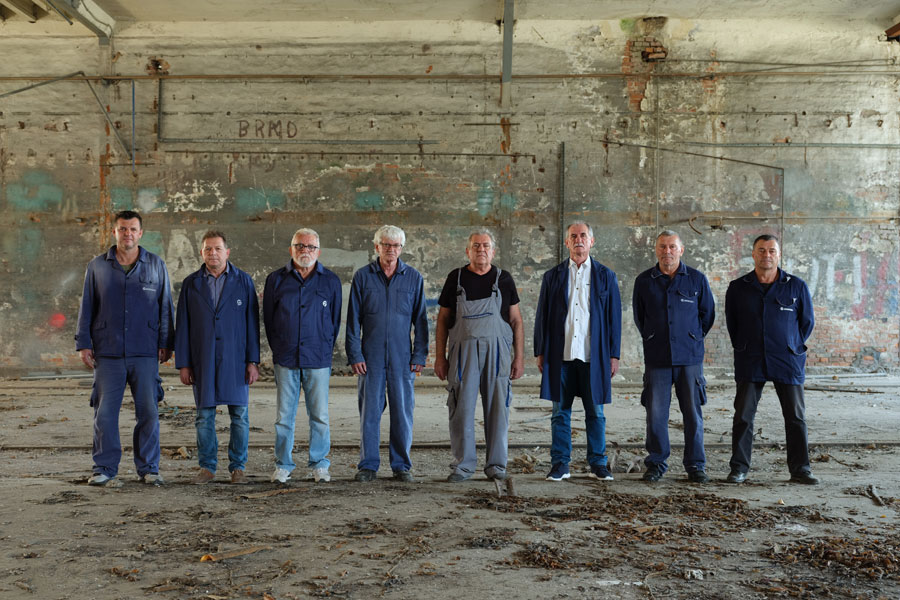Sarajevo review: What’s To be done? (2023)
Sarajevo Film Festival
Documentary Film Competition

The Croatian documentarist Goran Dević has an exceptional track record regarding both productivity and the overall quality of his work. The method is actually not very complicated: working on several modestly budgeted projects at the time, spending either a long, or a very brief span of it following and filming the subjects resulting in a feature-length documentary almost every year. The most recent one, What’s to Be Done?, has just premiered at the documentary competition of Sarajevo Film Festival.
This time his focus is on the Gredelj railway car factory in Zagreb, its destiny handled by its parent company Croatian Railways due several reasons: the poor/ unfair management, political decisions probably related to the EU regulations, the company’s bankrupcy and its (former) workers. The story is actually complicated and could be told from different perspectives (like pretty much every story from the transitional economies), but, as per usual, Dević’s is at something else: people and, among them, one man in particular – the syndicate activist Željko Starčević who lead the strike against the bankrupcy management.
After the opening scene that could be lifted from an art performance (complete with the musical background of Arvo Pärt’s Adam’s Lament), Dević and his crew start following Željko during, for him and the company, crucial year which is 2012. One of his co-workers Mladen has just killed himself unable to handle the preassure arising from the insecurity of company’s future and his own existence, so Željko handles the commemoration and takes a significant part in the company’s union fight against the bankrupcy management hired by the state to dissolve the factory’s assets. As time passes by (the process took some 9 years), Željko gets more radicalized, prone to getting into personal conflicts with his former friends who chose to obey the rules imposed from above, and willing to make the deal with the right-wing party about to take power. His intentions might be noble, but he certainly is not a completely positive character.
That chronicle, filmed in a strictly observational, comment-free method is the largest, but only the first act that ends with Željko changing his tactics once again and starring in a music video of a well-known Croatian leftist punk-rock band. The second act is also an observation of sorts, but this time the workers are those who observe Dević’s rough cut of the material during an internal screening, opening up and sharing their stories directly to the camera afterwards. The final act is, genre-wise, similar to the prologue, but more elaborate: in an abandoned, devastated factory, the workers “act” their work without tools in a mix between a contemporary performance, choreo-drama and a modern take on the socialist-realist “worker’s opera”.
Although completely different in styles, the three acts work quite well together to tell one story that is actually like many others, not just in Croatia and former Yugoslavia, but also in all of the “New Europe”. Dević’s style is simple and direct, relying on the live cinematography under the leadership of the filmmaker himself and his frequent DoP Damian Nenadić in long, continuous takes, with quick horizontal rotations serving as the means of the internal montage. The editing by Iva Kraljević is quite functional in dividing the parts within the first act and inducing the reflexive mood in the third one. The finely polished sound design by Ivan Zelić and Nina Ugrinović fulfils the soundscape since the music is largely absent, while the introduction of the textual cards reminds us of the lengthiness of the process and the time passing, affecting everybody involved. In the end, What’s to Be Done? does not only serve as a chronicle of social struggle, but also of the struggle within the person, all the right intentions with wrong decisions one can make on their way to a desired goal.
Original title: Što da se radi?
Year: 2023
Runtime: 78’
Country: Croatia
Languages: Croatian, English
Directed by: Goran Dević
Written by: Goran Dević
With: Željko Starčević
Cinematography by: Damian Nenadić
Editing by: Iva Kraljević
Sound design by: Ivan Zelić, Nina Ugrinović
Sound recording by: Hrvoje Bandić, Igor Šegović, Hrvoje Petek, Filip Ledinščak, Marijan Ledinščak, Davor Čavlović
Additional cinematography by: Goran Dević, Luka Matić, Stanko Herceg, Tonći Gaćina, Bojan Mrđenović
Colourist: Iva Kraljević
Assistant director: Zvonimir Jurić
Additional writing by: Zvonimir Jurić, Andrej Nikolaidis
Produced by: Hrvoje Osvadić
Production company: Petnaesta umjetnost
Supported by: Croatian Audiovisual Centre
















